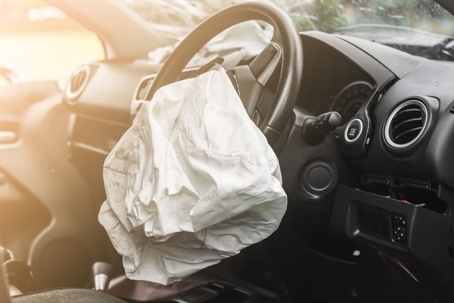We’ve all heard of the “black boxes” in airplane crashes, providing the rescue and recovery teams with precious information about what happened before a crash. Basically, they tell us all about what was going on in the plane at the time that things went wrong. What if there was a way to get similar information about car accidents?
What are EDRs?
What many people do not realize is that most automobiles have their own version of “black boxes:” the event data recorder (EDR), found in a car’s airbag control modules. These function very similarly to the black box in an airplane, providing information on the circumstances of a vehicle immediately before a crash occurs, and basically all modern cars include some form of this device when manufactured. While EDRs don’t provide audio or video recordings, they will store other information about the status of a vehicle from at least a few seconds before and then during an accident.
It used to be that the amount and usefulness of the information that these devices collected would vary greatly, and would depend largely on what the manufacturer of the car chose to track. In fact, the National Highway Traffic Safety Administration (NHTSA) technically still does not require that EDRs be installed in all newly manufactured vehicles. However, within the past few years the NHTSA has finalized new rules in an effort to standardize the data collected by vehicles that do have EDRs onboard. There are now fifteen types of crash data that EDRs must collect, including:
- Pre-crash speed
- Throttle activity
- Brake activity
- Changes in forward velocity (or “Delta V”)
- Seatbelt status
- Airbag warning lamp status
- Airbag deployment time
Any vehicle that has an EDR installed must gather these types of information, commonly referred to collectively as “crash data.” Even though the EDR can’t paint a complete picture on its own, all of these types of data help accident reconstruction experts better determine what caused an accident.
Why are EDRs Helpful?
EDRs, and the data they contain, provide reconstruction experts with an unbiased source of information on which to base their analysis. While calibration issues in the systems on which the EDR relies for its information can sometimes create inaccuracy in the raw data, experts can examine the condition of the vehicle, its engine, and its tires at the time of the crash to filter out these issues. Even further, judges have shown a willingness to allow raw data taken from EDRs as evidence during trials. So long as the data does not conflict with other physical evidence or appear incredible, it can be very helpful for winning a car accident case. This is also, however, what makes accident reconstruction experts necessary, as an expert will be able to verify the accuracy of the data taken from an EDR as compared to any other physical evidence.
A more pressing problem when dealing with EDRs, legal rather than technical, may be obtaining the data collected from another person’s vehicle. In 2015, Congress passed the Driver Privacy Act of 2015, establishing that the owner of a vehicle owns all data produced by the EDR within that vehicle, and that the data was protected as a privacy concern. At present, seventeen states, including New Hampshire, have also enacted laws that further restrict the ability to take data from others’ EDR systems. Because of these legal roadblocks, it’s important to get in touch with experienced counsel who have the knowledge and familiarity with accident reconstruction experts to get and use the crash data that you need for your case.
Do you believe that another driver may be at fault for your accident? If so, you need counsel on your side who have handled car accident cases before and know the experts on accident reconstruction. The attorneys at Douglas, Leonard, & Garvey can be reached at (603) 288-1403 or through our online contact form.

